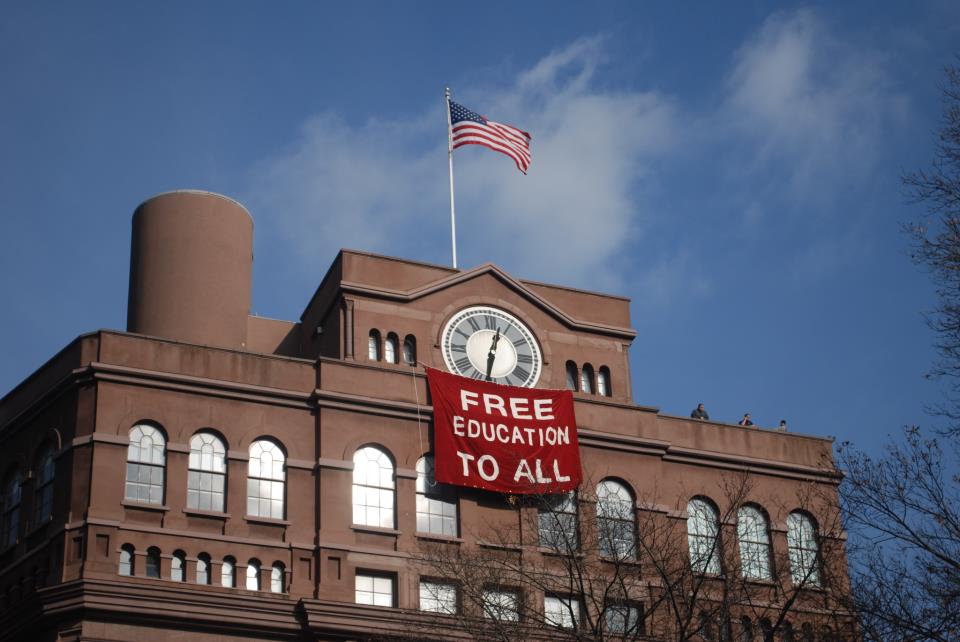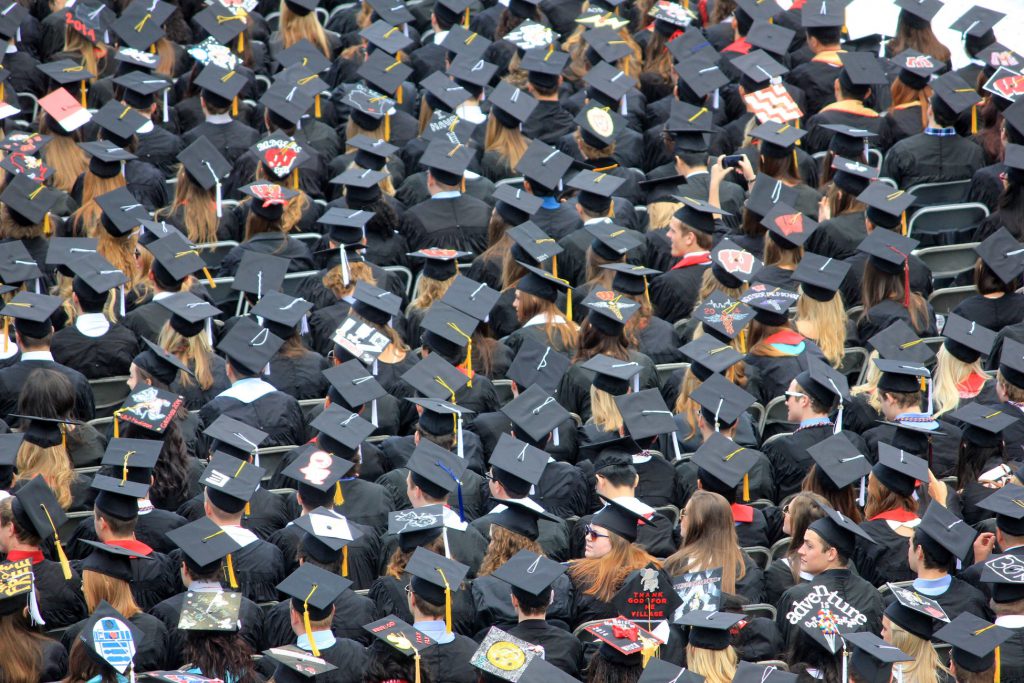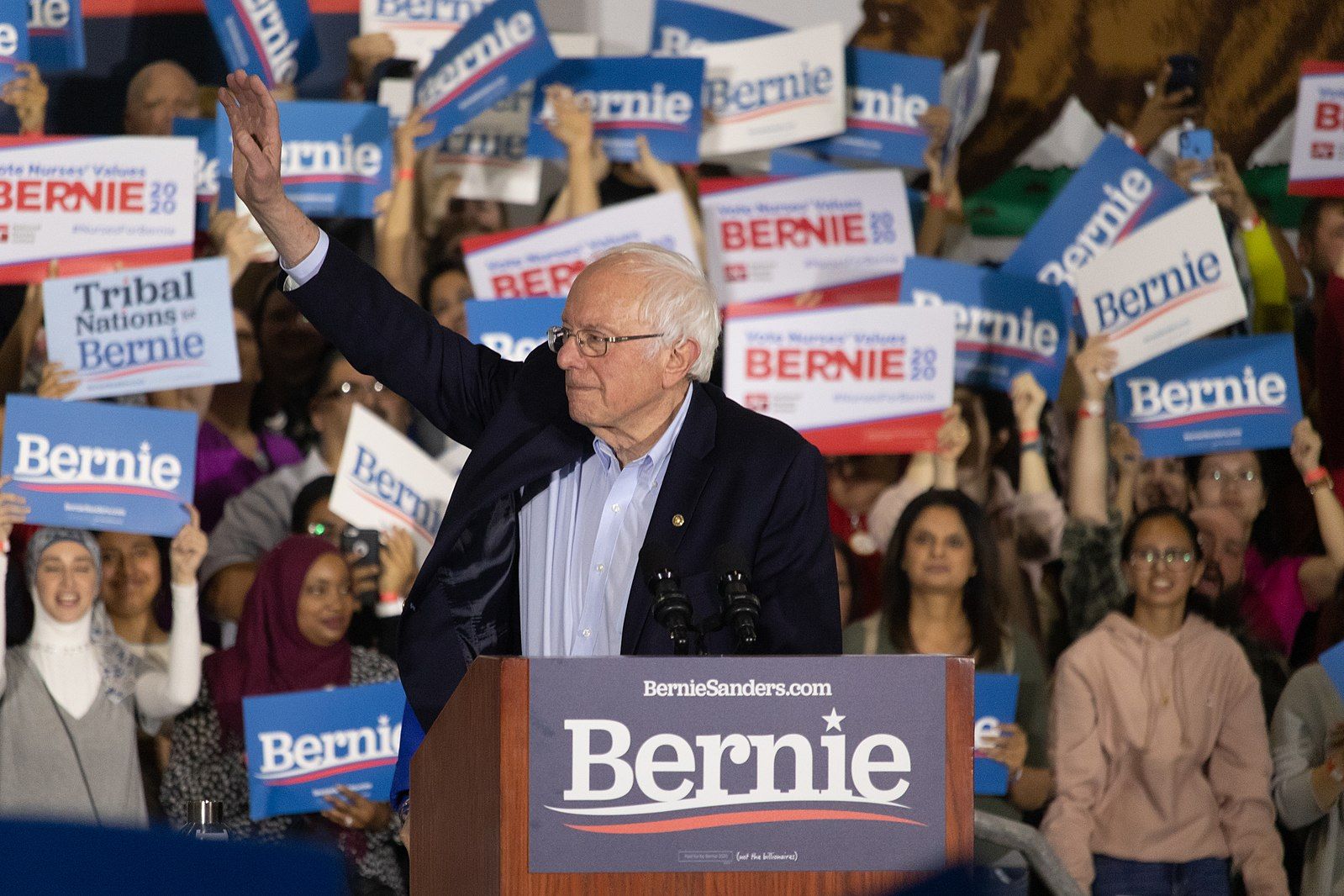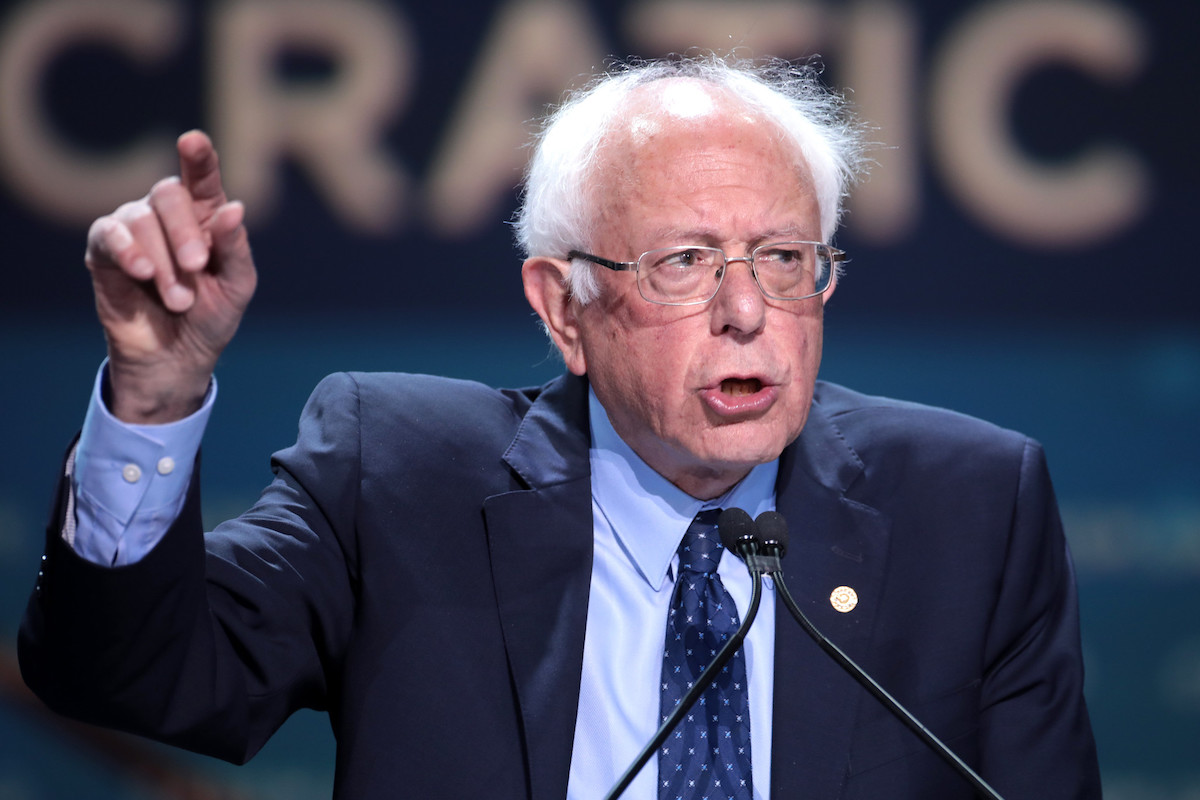Education
The High Cost of Free College for All
College is so accessible in the United States that it’s easier to get student loans and enroll in college than it is to enlist in the armed forces.

During the 2016 Democratic primaries, Bernie Sanders advocated a new federal entitlement making U.S. public colleges and universities tuition free. Since then, Democratic Socialists and some mainstream Democrats have begun supporting such a proposal. Alexandria Ocasio-Cortez, a Bronx, NY candidate running on a socialist platform who became a media star after unseating a senior House Democrat in a primary upset, has made it one of her central campaign issues.
Sanders argues that countries like Germany, Finland, Norway and Sweden have successfully made college free, but there are some major differences between the education systems of continental Europe and those of the United States that make Sanders’s proposal impractical.
Everyone has access to higher education in the United States
According to data collected by the U.S. Census, 90 percent of adults between ages 25 and 34 have a high school degree or its equivalent, and after high school about two-thirds of adults went on to one of America’s more than 4,500 institutions of higher education.
While many people’s archetypal idea of “college” is a selective private university or liberal arts college or a flagship public research university, academically selective institutions only serve a small segment of the population. Only about ten percent of the total number of US colleges and universities are ranked on the US News and World Report lists of “Best National Universities” and “Best Liberal Arts Colleges.” The majority of institutions, including about 1,700 two-year colleges, are much less academically selective or have open enrollment and accept anyone with a high school diploma.
Americans believe everyone should go to college, and public policy supports that belief with heavy subsidies, in the form of grants for low-income students and military veterans and government-guaranteed subsidized loans for everyone else.
America’s 65 percent college matriculation rate is high by global standards, even when compared to countries where tuition is free. But universal access isn’t entirely beneficial. The percentage of U.S. students who go to college substantially exceeds the percentage of U.S. students whose academic records suggest that they are capable of doing college-level work. The 35th percentile composite score on the SAT, based on a nationally-representative sample, is a 930. The College Board, which administers the SAT places its college-readiness benchmark at a 480 verbal and a 530 math, or a 1010 composite score, which places a tester at the median of the sample. Meeting that benchmark means that the student has a 75 percent chance of earning a C or better in first-year college reading and math classes.
This measure roughly predicts student outcomes; 46 percent of 25 to 34-year-old Americans have at least a 2-year degree, and 36.5 percent earned a four-year degree. However, about 19 percent of Americans enrolled in college but never earned a credential of any type—that’s nearly a third of all students.
As an institution’s admissions selectivity drops, so does its graduation rate. Overall, 60 percent of students who matriculate at a 4-year college as freshmen graduate within six years, according to data compiled by the National Center for Education Statistics. At schools that accept fewer than 25 percent of applicants, 88 percent of students graduate, and at schools that accept fewer than half of applicants, 70 percent graduate. However, at schools that take 90 percent of applicants, fewer than half graduate, and at open enrollment schools, only a third of freshmen complete their degrees. At community colleges, only 39 percent of all students earn a two-year degree within six years. Full-time community-college students have better odds; 55 percent of them graduate. But only about a quarter of part-time and mixed-enrollment students complete their degrees.
Colleges with low graduation rates criticize the methods by which these statistics are measured, because part-time students often take longer than six years to graduate, and the set of students who matriculate at an institution and do not graduate from it includes both students who drop out and students who transfer to other schools, some of whom earn degrees elsewhere. Swayed by these arguments, a federal committee convened to study low college graduation rates resulted in the Education Department changing the way the government measures graduation rates in 2017 so that the numbers look better. But no amount of finessing the data can change the fact that 19 percent of all 25-34 year olds went to college and didn’t earn a degree.
Like less-selective colleges, the US military requires a high school diploma or its equivalent to enlist, but it also makes prospective soldiers take a test called the Armed Services Vocational Aptitude Battery (ASVAB), and, while each branch has a slightly different cutoff, about a third of enlistees are rejected due to low test scores. By comparison, any US citizen with a high school diploma or its equivalent can currently qualify for student loans, without regard for other factors, such as the student’s credit history or test scores. The hitch is that student loan debt can carry high-interest rates, and, unlike other debts, it cannot be discharged in bankruptcy proceedings.
In other words, college is so accessible in the United States that it’s easier to get student loans and enroll in college than it is to enlist in the armed forces.
The cost of dropping out
While much media coverage of high college costs focuses on the debt loads taken on by students at selective and elite schools, those students are actually managing their debts well. For example, New York University is one of the most expensive private schools in the country, and students there borrow significantly more than average. After four years, an average NYU graduate has about $29,000 in student loans.
But despite that burden, three years after leaving school, only two percent of borrowers at NYU had defaulted on their student loans, compared to a nationwide average of 7.2 percent. That’s because over 85 percent of students who enroll at NYU graduate, and because NYU graduates are competitive for high-paying jobs.
Other selective schools have similarly low student loan default rates, because, despite the high cost of attending these schools, the wage premium that comes with a respected credential more than covers the loan burden. But, for those who don’t graduate, there’s no wage premium. While less-selective public four-year schools and two-year community colleges typically cost a lot less than elite universities, it’s easier for elite graduates to manage large debts than it is for borrowers who don’t earn a credential to manage small ones.

Education Sector, a non-profit behavioral and social science organization, found in a 2013 survey that 514 US colleges and universities had higher percentages of students who defaulted on student loans than graduated. A disproportionate number of these institutions were for-profit institutions, but 314 were public two-year colleges. That means that one in five community colleges has more students who default on student loans than graduate.
Every academic measure shows that a large percentage of American high school graduates lack the reading, writing and math skills to pass introductory college courses, and despite reliable data warning that these students are unlikely to succeed in college, hundreds of thousands of them are permitted to enroll in college each year, only for them to inevitably to fail out. The practice of admitting students who are not capable of doing college-level work causes a great deal of misery and an enormous waste of time, public resources and the students’ money.
The Sanders proposal doesn’t solve the problems with US education
Between 1980 and 2015, the number of degree granting institutions in the United States rose by nearly half, from 3,231 to 4,627, even though the number of college-age students hasn’t risen by anything like that proportion; the Millennial generation is about the same size as the Baby Boomer generation, and about 20 percent larger than Generation X.
Some of the growth in higher education is the result of an increasingly sophisticated economy requiring a more educated workforce; people who once would have gone from high school into skilled jobs that did not require degrees now need to go to college. Some of the growth in higher education is the result of better access to college for women and minorities.
But a lot of colleges that were not around a few decades ago exist only because of federal subsidies, and enroll anyone eligible for federal aid, regardless of their academic qualifications. This is the business model of the for-profit sector, but many public two-year and four-year colleges serve similar students. Many of these students are academically weak, and few of them complete their degrees. But access to government aid isn’t contingent on academic success, and schools get to cash the checks regardless of whether or not the students graduate.

The only part of this system Sanders seems to be concerned with is the fact that students come out of it saddled with debt. Making tuition free will completely socialize the cost and risk of student failure at hundreds of schools that enroll students who are more likely to drop out than to ever graduate, at a cost of $75 billion per year. Sanders promises to fully fund this program by taxing “Wall Street speculators,” but realistically, taxpayers will bear the cost of this program, either directly through increased federal taxes, or by losing out on other potentially beneficial uses of these federal funds.

Students who earn degrees, especially those who graduate from four-year institutions and go on to earn above-average incomes, will likely wind up paying more in increased taxes to fund these programs than they would have saved on tuition, and people who have already graduated will have to fund this even though they already paid their own tuition or may still be paying off loans.
Since the Sanders proposal would only cover students attending public colleges, students who attend private schools wouldn’t benefit from this entitlement, but would still be on the hook for funding it. The proposal doesn’t explain how it would handle benefits for students who want to attend public colleges outside their home state, but there are about 17 million college students in the United States, so Sanders’s $75 billion allots about $4,400 to each student, which doesn’t pay the bills even for in-state students at many public flagships. The University of Michigan, for example, costs over $15,000 per year for Michigan residents, and about $50,000 for out-of-state students. It’s not clear if or how Bernie plans to make schools like that tuition-free.
Students who drop out, and who are currently at very high risk to default on student loans, will be better off under a program that lets them leave college for free. But they’ll still be worse off than they would have been if they never went to college in the first place, because they will still waste their time struggling in courses that they cannot pass, and will still have poor employment prospects after they drop out. Instead of further subsidizing the programs that are currently failing these students, it would make more sense to try to develop some sort of new postsecondary job-training program that might have better results for students who are unlikely to complete a college degree.
The only clear beneficiaries of the Sanders proposal are minimally-selective and open-enrollment colleges, which would not exist but for the enormous subsidies that already support thousands of such questionable institutions. These schools will get huge amounts of new government money while not being required to yield results for their students or the taxpayers.
Free tuition would probably encourage more students to go to college; the United States would probably have the highest college enrollment among 18-24 year-olds in the world. But in a country where two-thirds of the population is already going to college, there aren’t many promising students left to find, so growth in enrollment spurred by Sanders’s tuition-free college would mostly come from more students signing up to attend the least selective institutions. These institutions would expand to accommodate these new students and collect these new subsidies. We would see more minimally-selective public colleges opening up across the country.
It’s not clear that this would be beneficial. Based on testing data, increasing the percentage of 18-24 year olds who sign up for college from 65 percent of the population to 80 percent probably won’t do much to increase the percentage of 25-34 year olds with degrees, because America’s best students are already going to college, and few students in the bottom third of academic performers are capable of passing even introductory college classes.
Education subsidies need greater accountability
Sanders touts Germany as an example of a country that makes higher education free. But while Germany’s universities are fully funded by the state, they aren’t universally accessible. Germany practices extensive academic tracking that funnels nearly half of students into vocational programs. Only about 40 percent of German secondary-school students attend a university preparatory program, or Gymnasium, for secondary school, and these students must pass a difficult, high-stakes exam called the Abitur in order to qualify to attend a university. About 300,000 students pass the Abitur each year, and another 200,000 students qualify to attend technical colleges.
While short-term tertiary education — analogous to American two-year colleges — has been expanding in Germany, and the percentage of secondary school graduates entering some kind of tertiary education has risen from about a third in 2000 to more than half in 2016, the percentage of American high school graduates who go to college is still much higher than the percentage of Germans, even though Americans have to pay their own way.
Germany is able to make college free for its most promising students because it doesn’t pour massive amounts of taxpayer money into of colleges with very low admissions standards that recruit students who are unlikely to graduate. If the US wants to make college tuition-free, it should first do a better job of reducing waste and holding institutions and students accountable for outcomes.

The government has shown itself to be capable of doing this; the Obama administration cracked down hard on for-profit colleges, punishing them for low graduation rates and poor job placements. Between 2008 and 2016, student enrollment in for-profit schools shrank from 2.4 million to 1.6 million and Corinthian Colleges and ITT Technical Institutes — two large for-profit chains — collapsed after Obama cut off the spigot of federal money to their low-performing programs.
Although President Trump, who put his own name on a for-profit real-estate course called Trump University, has eased restrictions on for-profit colleges, Obama’s crackdown was an unalloyed good. For-profit schools get as much as 90 percent of their revenue from federal programs and, although they enrolled only about 11 percent of American students at their peak, they were responsible for more than 40 percent of student loan defaults. But, while Obama praised public community colleges as a less-expensive alternative to for-profit colleges, and sought to implement a national program to make community college free, less-selective and open-enrollment public two-year and four-year schools have flourished under the same set of subsidies that spawned the for-profits, recruit students with similar academic profiles, and produce student outcomes that aren’t much different.
The program Sanders proposes is massive; if implemented, it will increase federal education spending by 75 percent. The cost of this program is more than double what the U.S. government currently spends on science, and one-sixth the size of US defense spending. Before we funnel all this money into public colleges, we should take a close look at the value we can expect to get in return.
If we want to mimic the German education model, perhaps we should make college harder to get into before we make it free, so that we can ensure that most students who enroll can actually graduate. And maybe, like the Germans we should track more of our striving but below-average academic performers into vocational programs that will help them get better jobs instead of sending them to colleges where we know most of them will flunk.






